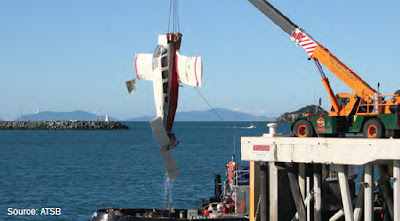Among the "viraliest" of the viral videos being picked up by "news" sites in the last few weeks is this video showing "scary" and "dangerous" landings in jetliners. Commenter Jim Shapiro forwards the latest victim of the supposition, the Huffington Post.
Said the Huffington Post:
The planes, from Emirates to Thomas Cook, approach the runway at odd angles to compensate for the high winds, which were gusting up to 55 knots on the day, Bogdan says.
Landing (and takeoff) is statistically riskier than other parts of the flight, 'Miracle on the Hudson' pilot Chesley 'Sully' Sullenberger' told us over the summer, due to cloud height, wind and visibility, among other things. Now we see why.
"Look at these impossible landings," a TV anchor on WCCO declared the other morning while showing the video.
Let's analyze what's really happening here. While it's flying, a plane doesn't move against the wind, it's in the wind. If the winds are blowing 55 mph across a runway (it's not here although the suggestion is that it is, but that's another discussion), the plane is also moving at 55 mph across a runway . That's not a good thing.
What the pilots of these planes are actually doing is making very professional and safe approaches. They're turning the nose into the wind -- against the wind, really -- in order to align with the the centerline of the runway...drifting neither left nor right. Where you do see the plane drifting, is the pilot calculating how much of an angle is necessary to align the jetliner's track with the centerline of the runway.
But, of course, you can't actually land that way, so shortly before touchdown, the pilot uses the plane's rudder to align the nose with the runway, so as not to put any "side load" on the landing gear. Every plane has a maximum "crosswind component" to help pilots calculate whether a landing can be made safety given a certain amount of wind and the angle at which it intersects the runway. So what you see above, while an example of pilot skill, is not luck at work.
If a pilot needs more time to get the angle right, he/she simply "goes around" and tries the approach again. Look up on any day with a light breeze the next time a small plane flies over your house, and the chances are the nose of the plane is not aligned with the path (heading) of the plane. Same thing.
Think of it this way: You're crossing a river with a canoe. If you point the canoe to the spot on the opposite shore where you intend to disembark, the current will carry you downstream. So, you point the canoe upstream of where you want to land and between your heading and the current, the result is usually a straight line to your intended "touchdown." With any luck when you get to the other side, there's nobody there with a camera to tell you how dangerous, scary, or impossible it was.

